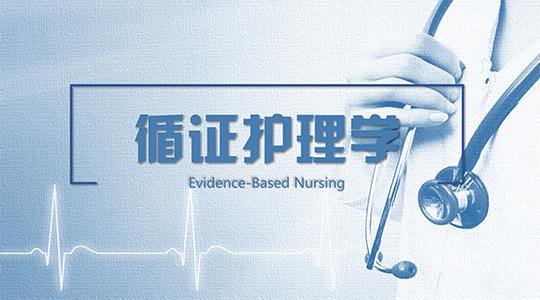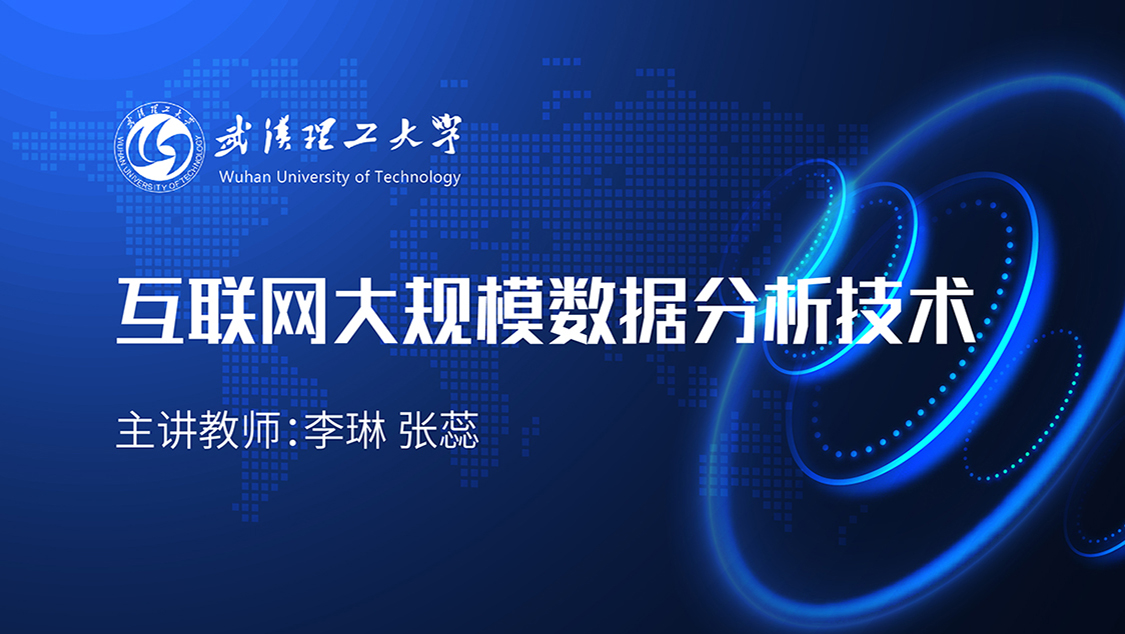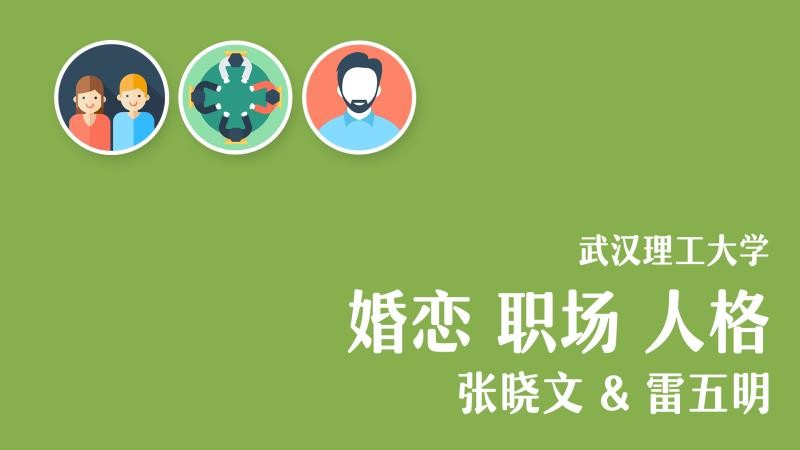
当前课程知识点:Five Disciplines of Management Quality and Ability —— Follow Me to Learn Management > The First Discipline: Situation Judgement, Scientific Decision-making > 1.1 Insight into the General Trend of the Environment (Ⅰ): PEST Method > 1.1 Insight into the General Trend of the Environment (Ⅰ): PEST Method
返回《Five Disciplines of Management Quality and Ability —— Follow Me to Learn Management》慕课在线视频课程列表
返回《Five Disciplines of Management Quality and Ability —— Follow Me to Learn Management》慕课在线视频列表
大家好
这次课让我们来聊一聊 洞察环境大势
在进入这次课程之前
让我们先来 想一想
1964年
《中国画报》封面刊登了一副
铁人 王进喜的照片
照片上 铁人 王进喜头戴大狗皮帽
身穿厚棉袄
顶着鹅毛大雪
握着钻机的手柄眺望远方
在他身后散布着星星点点的高大井架
其余再无任何信息
而A国的情报专家仅仅是根据这张照片
就掌握了大庆油田的相关情况
并且根据这幅照片所提供的信息
来向大庆油田高价推销炼油设施
请大家仔细看一看这张照片
并且想一想
A国专家
从中发现了大庆油田的哪些秘密
这个案例从管理的角度
可以给我们带来怎样的思考
现代企业必须保持对环境的敏锐观察能力
下面
我想同大家来分享一个案例
有两名销售人员
受各自公司的委派
到一个小岛上去推销鞋子
他们到了这个小岛之后
发现当地老百姓都是光着脚板
都没有穿鞋子
大家看
这两名销售人员所面对的
是完全相同的一个市场环境
但是这两名销售人员
所作出的理解和判断却是完全不一样
甲拿起电话
跟公司老板汇报
这个地方没有市场
因为当地老百姓都没有穿鞋子
都不需要鞋子
当甲面对着这样一种市场环境的时候
他是把它看做是一种威胁
而另外一名销售人员乙
他拿起电话
跟老板汇报
这个地方市场空间太大了
当地老百姓都没有穿鞋子
都需要鞋子
当乙面对着同样的一个市场环境的时候
却是把它理解成一种机会
我们大家可以思考一下
这是不是一名成功的销售人员
和一名不成功的销售人员的区别所在
这是不是一家成功的企业
同一家不成功的企业的区别所在
其实在绝大多数情况下
我们所面临的外部的环境都是一样的
关键在于我们具不具备
去分析环境 发现环境中机会的能力
这个案例给我们带来的启发是什么
其实我们每天都可能触摸到各种商业机会
关键是一定要具备捕捉机会的眼光和能力
那么我们应该如何对环境来进行分析
我们将分两次课来向大家进行介绍
这一次课
我们重点介绍如何去分析宏观环境
在理论上
关于宏观环境的分析
有一个成熟的理论分析框架
PEST模型
什么是环境分析的PEST模型
环境分析的PEST模型是指
我们要从政治法律 经济 社会 文化和技术
等环境的角度
来分析环境变化对一个企业可能产生的影响
1 P环境 也就是政治与法律环境
现代企业的经营活动
受到政治及法律的影响它是多方面的
不同的政治制度 不同的法律体系
它都会要影响到一个企业的经营活动
一个地方社会是否稳定
政局是否稳定
法律体系是否健全
对于企业的生产经营活动
都有着十分重要的影响
比如说
美国特朗普总统上台执政后
美国与我国在双方贸易方面的摩擦不断
这对于中国和美国的企业都将带来很大的影响
它不仅影响的是出口企业
对于其他的一些企业同样也有着影响
它不仅影响的是少数行业
对于相关的很多行业它都有影响
因此
政治和社会法律环境
是构成宏观大环境的重要的一个环节
2 E环境 也就经济环境
在影响企业生产经营活动里面的
众多的外部环境因素中
经济环境它是最基本 最重要的一个因素
一个国家的宏观经济政策走向
居民的收入水平
通货膨胀的走势
货币供应量与利率水平
还有产业结构的变化等等
它都会对企业的经营产生很大的影响
例如
近年来随着收入水平的不断提升
旅游成了丰富人们业余文化生活的
一种重要方式
携程旅游网很好地把握了这重要的机遇
及时地推出线上旅游平台
为广大消费者提供更便捷 更灵活的服务
携程从一家提供传统酒店预订服务的企业
迅速发展成为了目前互联网旅游企业第一品牌
因此
把握经济大势
抓住消费热点
这是企业发展的重中之重
3.S环境 也就社会与文化环境
主要是指
人们的价值观 生活方式 风俗习惯
信仰 消费习惯等等
这些方面的因素
对于企业同样有着很大的影响
我们需要把握不同社会文化环境下面
消费者的需求习惯和需求痛点
例如
我们提起国产手机品牌
你可能想到的是华为 是小米等等
但是你可能不知道
我国还有一个称霸非洲的手机品牌
这个手机品牌在非洲是一家独大
独揽了40%以上的市场份额
它叫传音
这个传音
论口碑实力 比不过华为
论现代营销 它比不过小米
但是它赢在了对消费群体的细分上面
它专门为非洲消费者来做手机
传音公司它站在非洲人的角度来分析
非洲消费者拿手机自拍他有什么痛点
传音公司搜集了当地人的大量照片
根据非洲人的肤色
采用独特的定焦方式
用眼睛和牙齿来定焦
在这个基础上来设计曝光的指数
帮助非洲消费者拍出了更加满意的照片
传音手机所拍出来的非洲人的照片
比其他手机拍出来的效果都要好很多很多倍
因此
传音手机一上市
立刻成为非洲消费者心目中的第一品牌
在非洲消费者的心目中
传音手机才是大品牌
传音也因此独揽非洲市场
4 T环境 也就是技术环境
当今世界正处于新技术的变革时期
最近几年来
人工智能AI 物联网 新材料 新能源等
技术的飞速发展
给企业经营带来了前所未有的机遇和挑战
例如
高铁技术的成熟与发展
对于传统的一些行业
如民航 还有我们传统的铁路
带来了很大的挑战
但是高铁行业它也不是高枕无忧的
高铁行业它也不是高枕无忧的
技术在不断地叠代创新
最近超级高铁 也就是 真空高铁 的问世
给高铁产业敲响了一记警钟
超级高铁它通过结合磁悬与真空技术
最高速度可以达到每小时一千三百多公里
是目前我国 复兴号 高铁
最高速度的四到五倍
因此
现代企业要时刻关注最新技术的发展
要不断地加大技术创新的力度
现在
让我们回到课程开始前的 想一想
日本情报专家是这样分析的
1 他们根据照片上王进喜的衣服作出判断
只有在北纬46度至48度的区域内
冬季才有可能穿这样的衣服
因此它推断出大庆油田位于
齐齐哈尔与哈尔滨之间
2 他们根据照片中王进喜所握手柄的架式
推断出了油井的直径;
3 从王进喜所站的钻井
与背后油田间的距离和井架的密度
推断出油田的大致储量和产量
有了这么多的准确的信息
日本人迅速设计出了
适合大庆油田开采所用的石油设备
当中国政府向世界
来征求开采大庆油田的设备方案的时候
日本人一举中标
庆幸的是什么
日本当时正处于经济危机
他们仅仅是根据情报分析的结果
向我国来高价推销炼油设施
而并不是用于军事战略意图
学以致用
在这次课程结束之前
我给大家留下一个思考题
请大家 用一用
近年来
我国光伏产业在经过一段时间的快速发展之后
目前正处于艰难的调整时期
请大家查阅我国光伏行业的相关资料
并应用环境分析的PEST模型
对我国光伏产业目前所处的环境进行分析
关于思考题
我们将在课程互动讨论区
同大家一起来讨论
并给出我们的观点
好 这次课就到这里 下次课见
-0.1 What is Management: The Secret of Management is to Borrow Resources
--0.1 What is Management: The Secret of Management is to Borrow Resources
--0.1 What is Management: The Secret of Management is to Borrow Resources
--0.1 What is Management: The Secret of Management is to Borrow Resources
-0.2 Natural Attribute and Social Attribute of Management
--0.2 Natural Attribute and Social Attribute of Management
--0.2 Natural Attribute and Social Attribute of Management
--0.2 Natural Attribute and Social Attribute of Management
-0.3 The Scientificity and Artistry of Management
--0.3 The Scientificity and Artistry of Management
--0.3 The Scientificity and Artistry of Management
--0.3 The Scientificity and Artistry of Management
-0.4 Management Functions, Skills and Roles
--0.4 Management Functions, Skills and Roles
--0.4 Management Functions, Skills and Roles
--0.4 Management Functions, Skills and Roles
-0.5 Case Study: Personal Excellence Doesn’t Mean Much
--0.5 Case Study: Personal Excellence Doesn’t Mean Much
--0.5 Case Study: Personal Excellence Doesn’t Mean Much
--0.5 Case Study: Personal Excellence Doesn’t Mean Much
-0.6 Centennial Management Context (Ⅰ)
--0.6 Centennial Management Context (Ⅰ)
--0.6 Centennial Management Context (Ⅰ)
--0.6 Centennial Management Context (Ⅰ)
-0.7 Centennial Management Context (Ⅱ)
--0.7 Centennial Management Context (Ⅱ)
--0.7 Centennial Management Context (Ⅱ)
--0.7 Centennial Management Context (Ⅱ)
-0.8 Case Study: Management Enlightenment of Journey to the West Team
--0.8 Case Study: Management Enlightenment of Journey to the West Team
--0.8 Case Study: Management Enlightenment of Journey to the West Team
--0.8 Case Study: Management Enlightenment of Journey to the West Team
-Course Introduction Unit Test
-1.1 Insight into the General Trend of the Environment (Ⅰ): PEST Method
--1.1 Insight into the General Trend of the Environment (Ⅰ): PEST Method
--1.1 Insight into the General Trend of the Environment (Ⅰ): PEST Method
--1.1 Insight into the General Trend of the Environment (Ⅰ): PEST Method
-1.2 Insight into the General trend of the Environment (Ⅱ): Porter’s Five Forces Model
--1.2 Insight into the General trend of the Environment (Ⅱ): Porter’s Five Forces Model
--1.2 Insight into the General trend of the Environment (Ⅱ): Porter’s Five Forces Model
--1.2 Insight into the General trend of the Environment (Ⅱ): Porter’s Five Forces Model
-1.3 Case Study: How McDonald’s Entered Chinese Market
--1.3 Case Study: How McDonald’s Entered Chinese Market
--1.3 Case Study: How McDonald’s Entered Chinese Market
--1.3 Case Study: How McDonald’s Entered Chinese Market
-1.4 Strategic Decision Analysis Tools: SWOT Analysis and BCG Matrix
--1.4 Strategic Decision Analysis Tools: SWOT Analysis and BCG Matrix
--1.4 Strategic Decision Analysis Tools: SWOT Analysis and BCG Matrix
--1.4 Strategic Decision Analysis Tools: SWOT Analysis and BCG Matrix
-1.5 Group Decision-making Tools and Methods: Delphi Method and Brainstorming Method
--1.5 Group Decision-making Tools and Methods: Delphi Method and Brainstorming Method
--1.5 Group Decision-making Tools and Methods: Delphi Method and Brainstorming Method
--1.5 Group Decision-making Tools and Methods: Delphi Method and Brainstorming Method
-The First Unit Test
-2.1 Attitude Determines Everything
--2.1 Attitude Determines Everything
--2.1 Attitude Determines Everything
--2.1 Attitude Determines Everything
-2.2 The Components and Formation of Attitude
--2.2 The Components and Formation of Attitude
--2.2 The Components and Formation of Attitude
--2.2 The Components and Formation of Attitude
-2.3 How to Change the Attitude of Employees
--2.3 How to Change the Attitude of Employees
--2.3 How to Change the Attitude of Employees
--2.3 How to Change the Attitude of Employees
-2.4 Responsibility and Efficient Execution
--2.4 Responsibility and Efficient Execution
--2.4 Responsibility and Efficient Execution
--2.4 Responsibility and Efficient Execution
-2.5 Ethics and Core Values
-The Second Unit Test
-3.1 Basic Issues in Organization
--3.1 Basic Issues in Organization
--3.1 Basic Issues in Organization
--3.1 Basic Issues in Organization
-3.2 How to Establish an Effective Organizational Structure (Ⅰ)
--3.2 How to Establish an Effective Organizational Structure (Ⅰ)
--3.2 How to Establish an Effective Organizational Structure (Ⅰ)
--3.2 How to Establish an Effective Organizational Structure (Ⅰ)
-3.3 How to Establish an Effective Organizational Structure (Ⅱ)
--3.3 How to Establish an Effective Organizational Structure (Ⅱ)
--3.3 How to Establish an Effective Organizational Structure (Ⅱ)
--3.3 How to Establish an Effective Organizational Structure (Ⅱ)
-3.4 Case Study: The Responsibility of the Sales Department
--3.4 Case Study: The Responsibility of the Sales Department
--3.4 Case Study: The Responsibility of the Sales Department
--3.4 Case Study: The Responsibility of the Sales Department
-3.5 Effective Communication Skills
--3.5 Effective Communication Skills
--3.5 Effective Communication Skills
--3.5 Effective Communication Skills
-3.6 Organizational Cultural Function and Content
--3.6 Organizational Cultural Function and Content
--3.6 Organizational Cultural Function and Content
--3.6 Organizational Cultural Function and Content
-3.7 Case Study: Resignation (Ⅰ)
--3.7 Case Study: Resignation (Ⅰ)
--3.7 Case Study: Resignation (Ⅰ)
--3.7 Case Study: Resignation (Ⅰ)
-3.8 Case Study: Resignation (Ⅱ)
--3.8 Case Study: Resignation (Ⅱ)
--3.8 Case Study: Resignation (Ⅱ)
--3.8 Case Study: Resignation (Ⅱ)
-The Third Discipline Unit Test
-4.1 How to Recruit Good Staff
--4.1 How to Recruit Good Staff
--4.1 How to Recruit Good Staff
--4.1 How to Recruit Good Staff
-4.2 Motivate Employees’ Work Potential
--4.2 Motivate Employees’ Work Potential
--4.2 Motivate Employees’ Work Potential
--4.2 Motivate Employees’ Work Potential
-4.3 Content-based Incentive Theory (Ⅰ): Hierarchical Theory and ERG theory
--4.3 Content-based Incentive Theory (Ⅰ): Hierarchical Theory and ERG theory
--4.3 Content-based Incentive Theory (Ⅰ): Hierarchical Theory and ERG theory
--4.3 Content-based Incentive Theory (Ⅰ): Hierarchical Theory and ERG theory
-4.4 Content-based Incentive Theory (Ⅱ): Motivator-Hygiene Theory
--4.4 Content-based Incentive Theory (Ⅱ): Motivator-Hygiene Theory
--4.4 Content-based Incentive Theory (Ⅱ): Motivator-Hygiene Theory
--4.4 Content-based Incentive Theory (Ⅱ): Motivator-Hygiene Theory
-4.5 Process-based Incentive theory: Expectation Theory and Fairness Theory
--4.5 Process-based Incentive theory: Expectation Theory and Fairness Theory
--4.5 Process-based Incentive theory: Expectation Theory and Fairness Theory
--4.5 Process-based Incentive theory: Expectation Theory and Fairness Theory
-4.6 Behavioral Transformation Incentive Theory: Reinforcement Theory
--4.6 Behavioral Transformation Incentive Theory: Reinforcement Theory
--4.6 Behavioral Transformation Incentive Theory: Reinforcement Theory
--4.6 Behavioral Transformation Incentive Theory: Reinforcement Theory
-The Fourth Unit Test
-5.1 The Essence and Tasks of Effective Leaders
--5.1 The Essence and Tasks of Effective Leaders
--5.1 The Essence and Tasks of Effective Leaders
--5.1 The Essence and Tasks of Effective Leaders
-5.2 Trait Theory of Leadership
--5.2 Trait Theory of Leadership
--5.2 Trait Theory of Leadership
--5.2 Trait Theory of Leadership
-5.3 Leadership Behavior Theory
--5.3 Leadership Behavior Theory
--5.3 Leadership Behavior Theory
--5.3 Leadership Behavior Theory
-5.4 Leadership Situation Theory
--5.4 Leadership Situation Theory
--5.4 Leadership Situation Theory
--5.4 Leadership Situation Theory
-5.5 Innovation and Entrepreneurship
--5.5 Innovation and Entrepreneurship
--5.5 Innovation and Entrepreneurship
--5.5 Innovation and Entrepreneurship
-5.6 Two New Trends of Innovation
--5.6 Two New Trends of Innovation
--5.6 Two New Trends of Innovation
--5.6 Two New Trends of Innovation
-The Fifth Unit Test
-Final Exam


